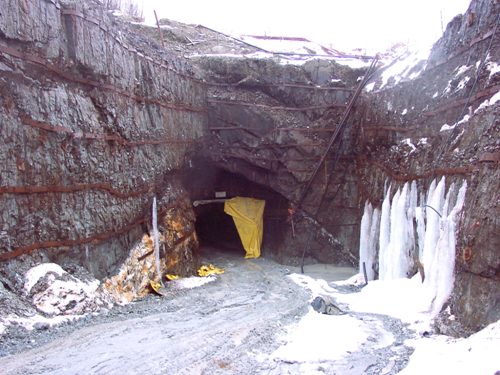Ressources Appalaches has declared the follow-up metallurgical test results from the Dufferin Mine located in Nova Scotia. The gravity metallurgical test on a composite sample weighing 50 kg was completed by Met Solve Laboratories. A grade of 17.7 g/t gold was collected with a concentrate of 491 g/t gold and a recovery of 94.1%.
 Dufferin Mine
Dufferin Mine
This test shows that gravity concentration can help in recovering majority of gold, and Dore bullion can be produced by smelting on site. Tests are underway to process the gravity tailings and to verify the additional recovery, which can be achieved by flotation. High gold recovery by gravity concentration and smelting on site demonstrates that only a small portion of the production will be subjected to external smelter charges.
Under the gravity test work, the sample was grounded to 1.5 mm and was made to pass via a 20 mesh screen, which in turn was made to pass across a Falcon L40 laboratory concentrator. The concentrate was panned to make tailings and a concentrate that were assayed. Then, the +20 mesh material and the L40 tailings were crushed and were passed via the L40; the concentrate was panned and both the products were assayed. The L40 tailings were again crushed to a P80 of 130 µ and passed via the L40 again; the concentrate was panned and the products were assayed. The recovery from these concentrates was 94.1% and the typical grade was 491 g/t.
A 50-kg composite sample was dispatched to Met-Solve Laboratories. It included 92 NQ samples from 13 boreholes. The drill intersections were obtained from the core section of the mineralised zone, which comprises eight Saddle Reef-type veins, disbursed across 700 m and down to a depth of 275 m. All drill cores are stocked at the mine-site.